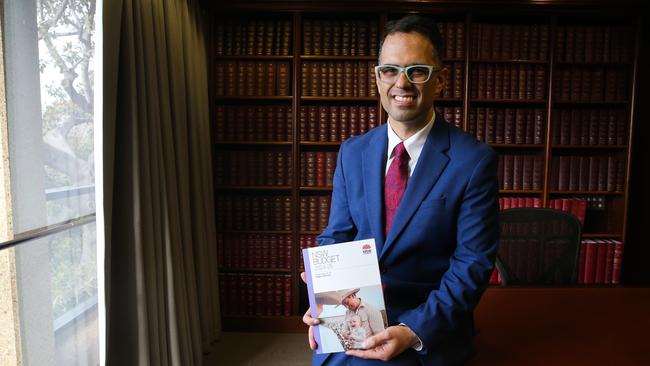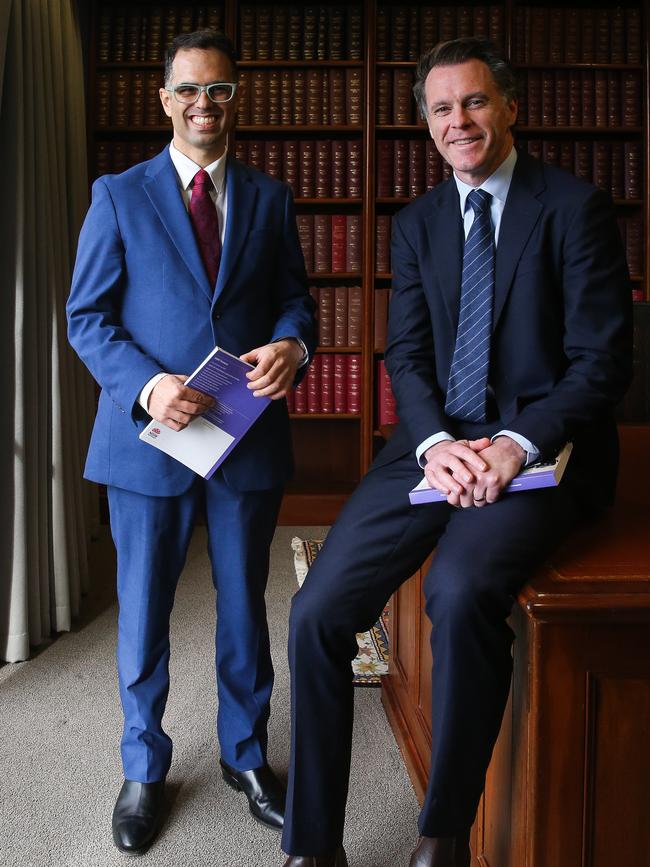James O’Doherty: Last-minute boost but Mookhey keeps the budget basic
The Minns government’s spending on infrastructure will drop off a cliff over the next few years, despite an $11b boost to the coffers this week, writes James O’Doherty.
Opinion
Don't miss out on the headlines from Opinion. Followed categories will be added to My News.
Hours before Daniel Mookhey delivered his second budget, the Treasurer was still finalising his speech to parliament.
The eleventh-hour changes were true to form for a budget that was based on revenue figures that were only confirmed at the last minute.
If government sources are to be believed, Mookhey only found out that NSW would get a revenue windfall worth almost $11 billion after most of the budget was already written.
The surprise cash boost, driven by higher than expected stamp duty and land tax takings, flew in the face of Mookhey’s warnings that the budget was going to cop a body blow from cuts to our GST share.
Maybe this is why the Labor government’s spending on infrastructure will drop off a cliff over the next few years.
Spending on capital measures (including transport infrastructure, schools, hospitals) next financial year will actually be $566 million less than predicted just six months ago.
In total, $31.3bn in capital spending is forecast to go out the door in 2024-25. That spending drops almost 12 per cent by 2027-28, to $27.6bn. Transport spending will fall by 34 per cent, and education spending is down 41 per cent.

What all of this means is that while the Minns government will continue building projects started by the Coalition, new ideas are thin on the ground.
A number of original projects only have an oily-rag’s worth of funding committed; a new school for Box Hill, secured after a campaign from The Daily Telegraph, has only been allocated $630,000 in the budget papers.
In total, there is only $106 million allocated for nine new or upgraded schools. There is no predicted start date and no forecast completion date.
The total cost to build or upgrade those schools will far outstrip the money allocated so far. As for the “estimated total cost,” the budget only gives a vague “n.a.”
The Coalition’s last budget did this, too. However, announcing projects without putting money down to build them is a bad look for a government that railed against the last mob over “unfunded infrastructure”.
The era of big-building budgets putting billions of dollars into infrastructure appears to be over.

Part of this is by design. Mookhey insisted he would only spend money on “must-haves,” not things that are just “nice to have”.
The Treasurer’s second budget was a Labor budget to its core: Money for social housing, more cash for frontline workers, and a $1.5bn hike on wealthy landlords to boot.
There were parts to like about Mookhey’s sequel, including a $189 million program to save families at the doctor, by providing tax concessions for doctors who bulk bill. Even some Liberals thought this was a good idea.
Tuesday’s budget was a no-frills, meat and potatoes affair; Mookhey even conceded as much on Tuesday.
“Budget 2024 does not seek to transform NSW immediately,” he told parliament.
Rather, it “builds the foundations of a better NSW”.
Mookhey’s focus has been on investing more money on essential services. A lot of that goes to the frontline workers who provide them.
But if voters are expecting this government to come up with something as bold as the next WestConnex, they’ll be left disappointed.
Government insiders have so far not been too concerned about having a dearth of mega-projects to announce.
For one, Minns ran to the election on a promise of being fiscally responsible. Also, they still have years worth of ribbons to cut on road and rail projects the Libs began but didn’t finish!
One thing insiders worry about, however, is getting back in the black. They know that Labor governments need to be good with money. That’s why Mookhey cut $13 billion of spending last year, and worked to get debt under control.
Tuesday’s budget forecast deficits as far as the eye can see. Mookhey concedes that much rides on the outcome of funding agreements the state strikes with the Commonwealth.
If NSW gets dudded again, as we did on our share of the GST, it could be very difficult indeed to turn things around.
Cuts to GST revenue is only one side of the story. Even factoring in a real loss of over four years of $6.2bn, the state will be a whopping $10.7bn better off over four years than Treasury predicted in December.
That is an awful lot of cash that he could have used to pay debt down further, or reduce deficits faster.
When Mookhey described his budget sequel as a “careful budget delivered in difficult times,” he was talking about the state of the economy.
He could also have been talking about the political climate ahead as Labor prepares to start budget number three.
Do you have a story for The Daily Telegraph? Message 0481 056 618 or email tips@dailytelegraph.com.au





